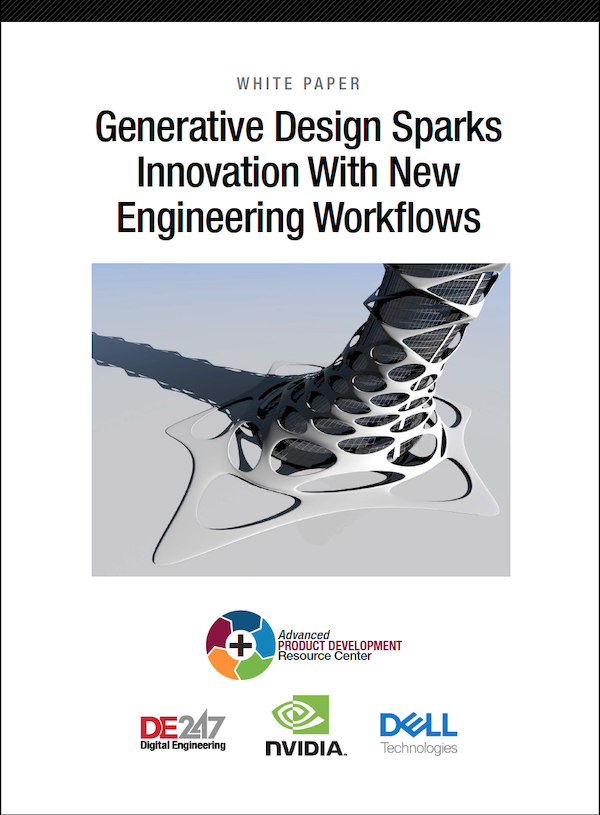A Match Made in Heaven
Additive manufacturing and generative design tools can be tapped as a dynamic duo to create and build parts fully optimized for weight and cost.
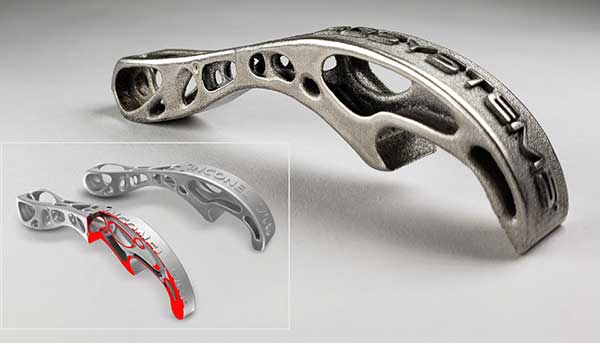
The design of metal 3D printed bottle opener demonstrates how tubular structurally-optimized algorithms can reduce mass. In this case, the tubular structure is hollow, and mass is reduced by 64% compared to the solid model. Image courtesy of 3D Systems.
Latest News
November 1, 2020
There’s a long history of iconic pairings. Fred Astaire and Ginger Rogers still reign in the dance world, while peanut butter and jelly remains a favorite sandwich pairing for folks of all ages. In the digital world, relative newcomer generative design technology is increasingly being eyed as a complement to additive manufacturing (AM) with the outcome being new workflows that turn out game-changing products.
Generative design tools, which include topology optimization and other artificial intelligence-based modeling techniques, burst on the scene these last few years as less expensive and more accessible computing power gives way to new algorithmic-driven design approaches.
These design tools provide a whole new level of design freedom by automating the ideation of hundreds of possibilities based off of specified parameters and constraints. The approach helps engineering teams zero in on parts and products that are fully optimized to meet weight, cost or thermal dynamic targets and that are simply not possible using traditional CAD tools and human brain power.
Just as mainstream CAD tools are not fully equipped to solve these novel design challenges, conventional manufacturing methods such as computer numerical control (CNC) milling and injection molding are not cut out to produce many of these new generative-designed parts due to the inherent limitations of the technologies. Yet coupling generative design tools with AM processes in a fully integrated workflow, engineering groups can achieve exponential benefits by leveraging the power of the combined technologies.
“If you’re going to take advantage of the advanced design freedoms that AM can enable, you need to have a design tool that can harness them,” says Jesse Blankenship, senior vice president of technology, advanced development for PTC. “Generative design fits the AM paradigm really well. It’s not limited by the typical drafting tools humans are accustomed to, like a ruler and compass.”
Two is Better Than One
Unlike traditional CAD tools that churn out detailed, solid 3D geometry, generative design tools employ algorithms to create faceted, non-orthodox shapes, that often take cues from nature. These designs, created through use of algorithms and simulation technologies, are proving to be instrumental in helping engineering teams achieve critical design goals such as lightweighting, part consolidation and flexible foundation development for mass customization.
Given their unique characteristics, many of these generatively designed parts can be difficult to produce in volume using traditional production methods. But AM technologies aren’t limited by the same constraints.
In fact, AM technologies’ support for advanced materials and ability to control material placement at a voxel level makes the genre especially well-suited to producing the organic shapes and complex lattice structures that define a new generation of algorithmic-built designs.
“Engineers designing something for a particular manufacturing process have had to abide by certain design rules they’ve learned over the years and [that] are well understood,” explains Brian Thompson, divisional vice president of technology, advanced development at PTC. “But the fact is, a lot of the work they’re doing is putting a design together to achieve a particular function while accommodating the rules of the manufacturing process. AM provides more freedom—it gives you this ability to think almost exclusively about the function of the design and what you are trying to achieve.”
Patrick Dunne, vice president of advanced application development for 3D Systems, goes further, and describes the relationship between the two technologies as symbiotic. The coupling lets engineers achieve better performance of their end product, whether that’s the structural integrity of load-bearing structures such as brackets or getting better fluid flow dynamics for a fuel injection system.
“Ultimately what it boils down to is making a piece of metal maintain its goal of supporting a structure while being ‘x’ percent lighter, generating fuel savings for an airliner, faster acceleration for a Formula One car, or less wear and tear on a robot,” Dunne explains. “At the end of the day, these algorithms can yield significant step changes in performance and, ultimately, what it boils down to is a better performing product.”
Sierra Turbines gained these results after it turned to AM and generative design technologies to reimagine its Aurelius Mk1 microturbine; the company’s main objectives included increased thrust-to-weight ratios and decreased unit cost.
Using the nTop generative design platform from nTopology in concert with VELO3D’s Sapphire metal 3D printer, the design team was able to consolidate 61 parts into a single part, reducing the number of joints between parts, thus minimizing the number of seals and fasteners and extending service life as well as flaws that could degrade engine performance.
Sierra Turbines could never have achieved this level of performance benefits using traditional design and manufacturing processes, contends Brad Rothenberg, nTopology’s CEO. “When you’re implementing advanced manufacturing, you don’t get value from taking a design meant for traditional manufacturing processes and simply trying to 3D print it,” he explains.
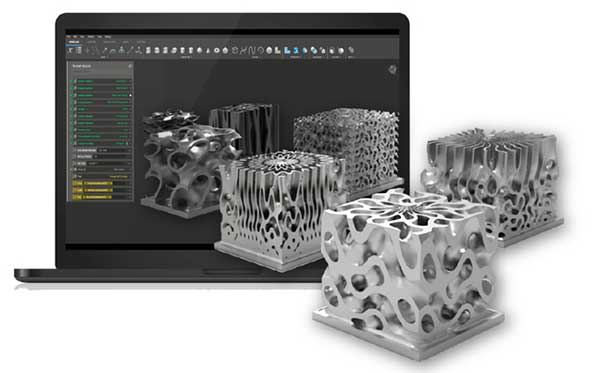
Instead, organizations need to update the design, or start from scratch, to achieve the performance benefits possible with 3D printing, he says.
In the case of Sierra Turbine, the nTop software drove the effort to reduce the 61-part count into a single component via its ability to address the end-to-end engineering problem to develop optimized design options as opposed to focusing on a single parameter such as strength characteristics.
“With the generative process, you’re able to capture and get control over thousands of different requirements like material properties to explore a bigger design space and get a better part,” he explains. “Engineers needs to be thinking about their specific requirements, the outputs they are trying to get, and how they can make this part meet certain objectives.”
Putting Generative Design Within Reach
Newcomers like nTopology and TOffeeAM position their platforms as generative design tools especially designed for AM processes. The nTop platform claims to be highly customizable and adaptable to engineering workflows as opposed to the “black box” paradigm adopted by most others in the emerging software category.
With the nTop Platform, engineers can capture custom logic and unique design requirements in functionally and fully customizable blocks. Other capabilities include “unbreakable” modeling features for designing complex lattice structures, multi-objective optimization, topology optimization and reusable design workflows.
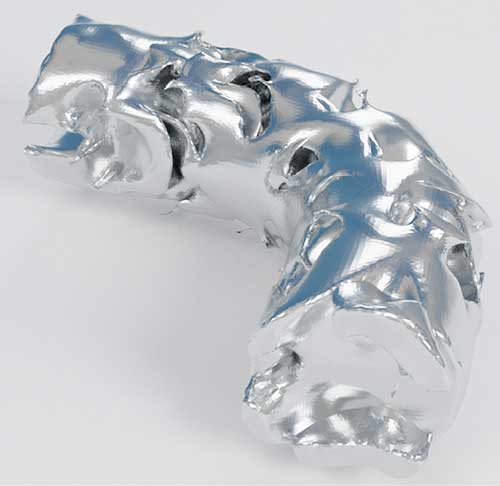
TOffeeAM is an automated design platform that works through simultaneous optimizations, including those for fluids, heats and structure, along with a specified design space and performance objectives to create best-in-class design choices. Using TOffeeAM’s generative design approach, organizations can bridge the gap between what’s possible with AM and what is likely given the relatively high learning curve and lack of AM expertise at many companies, according to TOffeeAM CEO and co-founder Francesco Montomoli.
“Today you have the computing power for designing any kind of crazy geometry, but you have to be able to output that crazy geometry,” he says. “Traditional design software is simply not capable without human intervention, and humans can’t possibly come up every possible solution. If it’s just trial and error, you just have stepped iteration and you’re not fully exploiting what AM can do.”
Mainstream CAD vendors are also stepping in with their own generative design solutions designed to exploit AM’s potential; however, their approach is to meld the capabilities into existing platforms to simplify the learning curve. Autodesk’s generative design capabilities are folded into the Fusion 360 platform, and the technology can be tapped to create optimized designs for AM along with traditional CNC machining, casting and injection molding processes.
Siemens Digital Industries Software has incorporated generative design and topology optimization capabilities into its NX platform to make the capabilities more accessible while adding an array of features designed to help teams optimize AM output. NX’s convergent modeling technology delivers unified 3D modeling, allowing engineers to easily collaborate and work between facet and B-rep data, creating a more integrated design workflow that results in lighter weight components that don’t sacrifice design intent or integrity.
Additionally, the company’s Simcenter 3D AM Process Simulation suite and the AM Path Optimizer integrated into NX helps customers solve challenges related to AM production, including reducing systematic failures due to overheating or analyzing material behavior to avoid deformation.
It’s a similar story at PTC, where the acquired Frustum technology is now Creo Generative Design. Creo also includes various capabilities to facilitate AM output, from visualizing and calculating support structures to the proper organization of parts on a print tray.
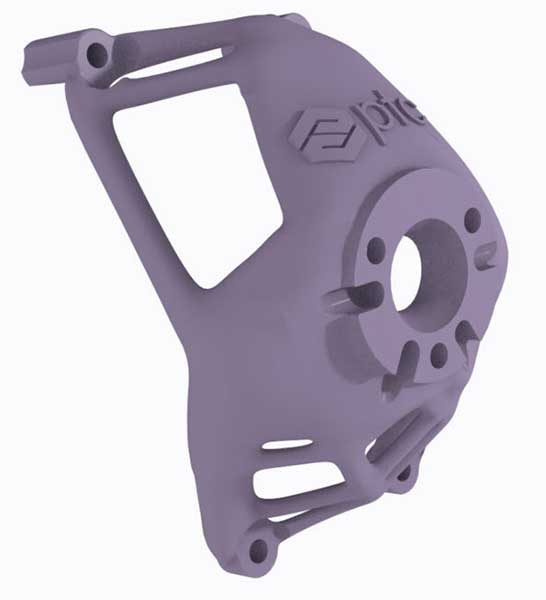
“We do not require users to learn a new environment,” says PTC’s Thompson. “Users expect to access generative design directly from the same interface they are used to and aware of—it’s a key piece of the puzzle.”
Gearing Up for a New Mindset
Though generative design tools and AM technologies have the potential to advance product design, it requires a completely new mindset to fully exploit the benefits of combined platform. To ensure the technologies are paired for the most effective results, organizations need to discourage silos in which different groups rely on different software, creating a lot of manual work to share files and slowing the iterative and creative design process.
Given the relative newness of both technologies, especially for production of parts, organizations also need to get people comfortable with algorithmic-driven design results—a feat that requires small wins that are widely communicated and promoted across the broader team.
Nonetheless, not every generative-designed component should be produced with AM technologies and there are pitfalls associated with the over-optimization of geometries—specifically, the possibility of approaching catastrophic failure modes. “There is still a lot of debate going on about how and where it’s smart to apply highly optimized geometries,” says 3D Systems’ Dunne. “There are some instances where it doesn’t make sense unless the algorithms get better and are able to anticipate outlier events or environmental exposures.”
Most important is elevating engineers’ ability to not only understand their requirements and design objectives, but to be able to communicate those design objectives to the system so the optimizations and output are viable as real, working products.
“It’s a mindset change—with traditional design, you’re designing a part that fulfills a set of requirements with your head,” says Kevin Carr, president of MasterGraphics, an AM value-added reseller and system integrator. “With generative design, you’re designing the problem and letting the cloud and the tool come up with the solution and then you pick the one that works best.”
More 3D Systems Coverage
More PTC Coverage
More TOffeeAM Coverage
Subscribe to our FREE magazine, FREE email newsletters or both!
Latest News
About the Author
Beth Stackpole is a contributing editor to Digital Engineering. Send e-mail about this article to [email protected].
Follow DE





